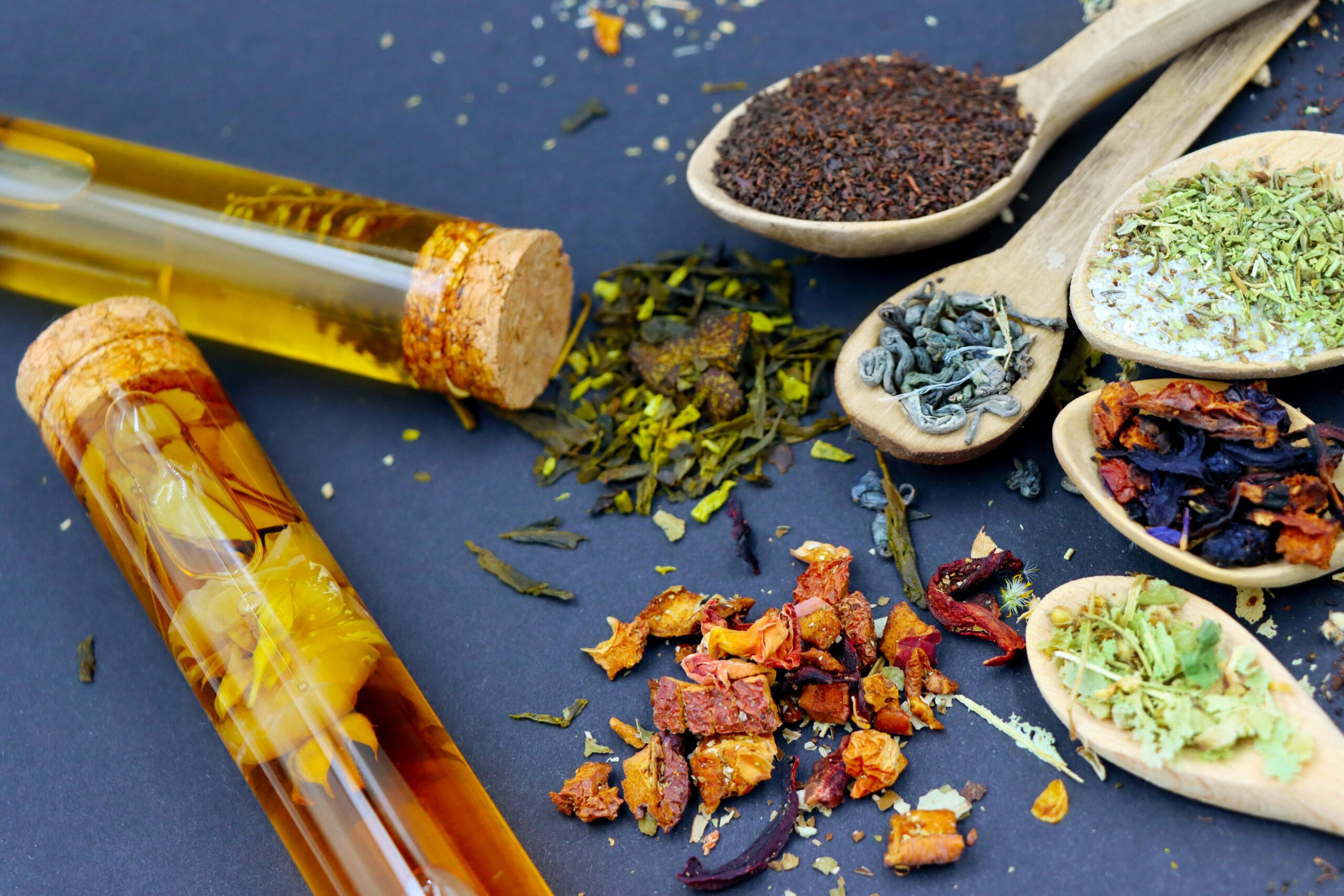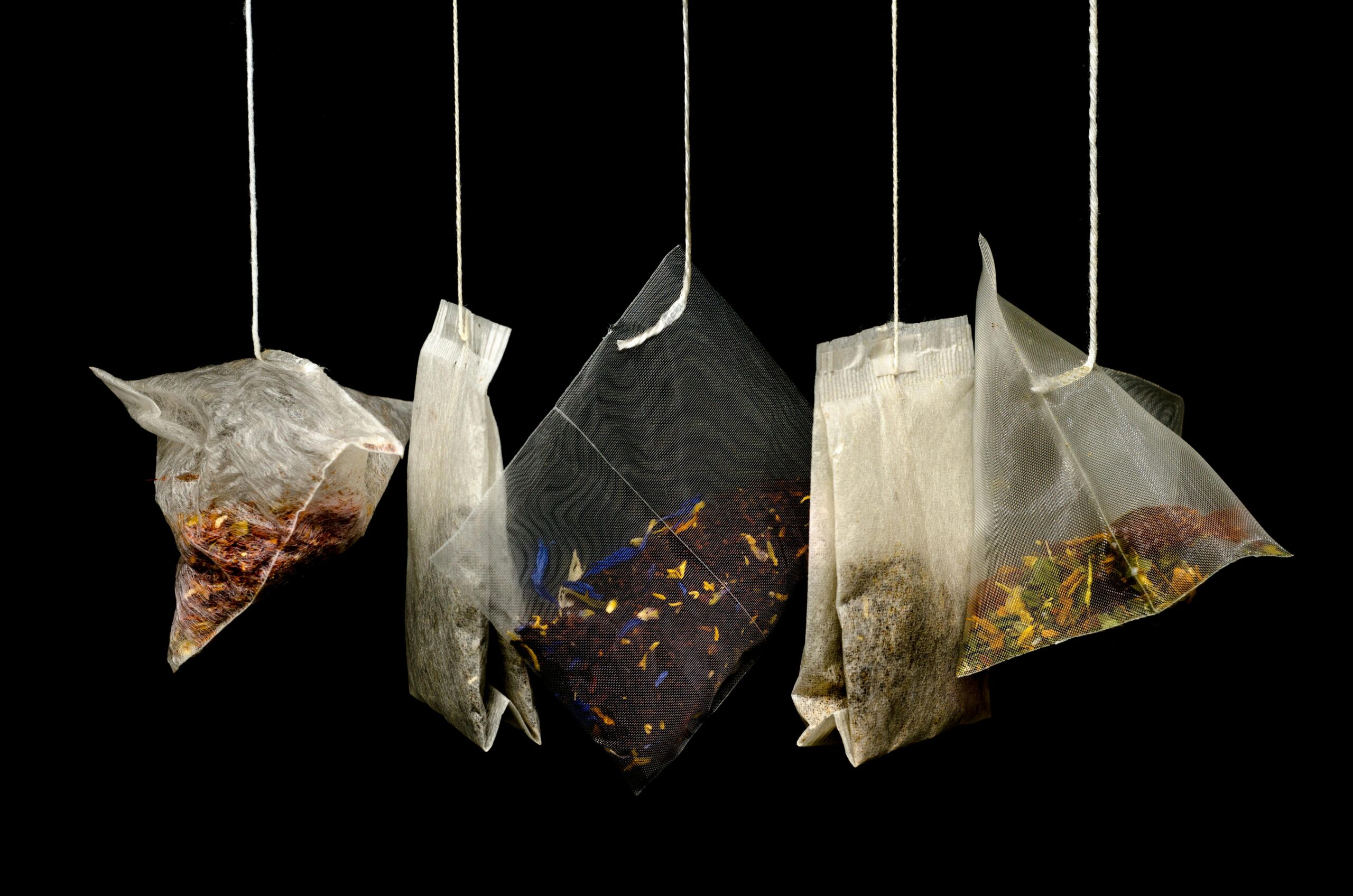Anúncios
Herbal teas have been warming hearts and soothing souls for thousands of years, offering natural comfort in every cup.
There’s something magical about brewing a cup of herbal tea. The steam rises, carrying delicate aromas that instantly transport you to meadows, gardens, and ancient traditions. Whether you’re seeking relaxation after a long day or simply enjoying a quiet moment, herbal teas offer a gentle embrace from nature itself.
Anúncios
Unlike traditional teas from the Camellia sinensis plant, herbal teas—or tisanes, as they’re technically called—come from a diverse world of flowers, leaves, roots, and spices. Each variety brings its own character, flavor profile, and cultural heritage to your teacup. Let’s explore this fascinating universe of botanical beverages that have captivated humanity across continents and centuries.
🌿 Understanding What Makes Herbal Teas Special
Herbal teas stand apart from conventional black, green, or white teas in several important ways. They’re naturally caffeine-free, making them perfect for any time of day or night. You can enjoy a soothing cup before bedtime without worrying about disrupting your sleep patterns.
Anúncios
The variety of herbal teas available today is truly staggering. From the sunny brightness of chamomile to the refreshing coolness of peppermint, there’s literally a flavor for every mood and moment. Many cultures have developed their own signature herbal blends, passed down through generations as treasured family traditions.
What makes these beverages particularly appealing is their versatility. You can enjoy them hot on chilly mornings, iced during summer afternoons, or blended with honey and lemon when you need extra comfort. They’re forgiving too—most herbal teas are difficult to over-steep, making them ideal for both beginners and experienced tea enthusiasts.
☕ The Most Beloved Herbal Tea Varieties
Chamomile: The Classic Comfort Tea
Chamomile tea holds a special place in the hearts of tea lovers worldwide. Made from the dried flowers of the chamomile plant, this golden-hued beverage has a gentle, apple-like sweetness that feels like a warm hug in liquid form.
Ancient Egyptians valued chamomile so highly they dedicated it to their sun god. Today, it remains one of the most popular herbal teas globally, often chosen as an evening ritual to help unwind after busy days. The delicate white flowers create a brew that’s both visually appealing and wonderfully aromatic.
Peppermint: Nature’s Refreshing Pick-Me-Up
Peppermint tea delivers an invigorating experience with every sip. The crisp, cool flavor awakens your senses and leaves your mouth feeling fresh and clean. It’s particularly popular during warmer months when served over ice with a sprig of fresh mint.
This tea comes from the peppermint plant, a natural hybrid of watermint and spearmint. The leaves contain menthol, which gives the tea its characteristic cooling sensation. Many people enjoy peppermint tea after meals, finding the refreshing taste particularly satisfying.
Ginger: The Warming Wonder
Ginger tea brings a spicy kick and warming quality that makes it especially beloved during cold seasons. Made from fresh or dried ginger root, this tea has a distinctive sharp, slightly sweet flavor with pleasant heat that spreads through your body.
Asian cultures have incorporated ginger into their tea traditions for millennia. The root can be sliced, grated, or powdered to create different intensity levels. Adding honey and lemon creates a classic combination that’s both comforting and flavorful.
Rooibos: The South African Treasure
Rooibos, also known as red bush tea, comes exclusively from South Africa’s Cederberg region. This naturally sweet tea has a deep reddish-brown color and a smooth, slightly nutty flavor that’s absolutely unique. Unlike many herbal teas, rooibos has a full-bodied character that satisfies even dedicated black tea drinkers.
What’s particularly wonderful about rooibos is its low tannin content, meaning it never becomes bitter—even if you accidentally leave the tea bag in too long. It’s naturally sweet enough that many people enjoy it without any added sweeteners.
Hibiscus: The Ruby-Red Delight
Hibiscus tea is a showstopper with its stunning deep crimson color and tart, cranberry-like flavor. Made from the dried calyces of the hibiscus flower, this tea is enjoyed both hot and cold in cultures around the world, from Caribbean sorrel to Egyptian karkadeh.
The vibrant color alone makes hibiscus tea Instagram-worthy, but the refreshing tartness keeps people coming back for more. It’s often blended with sweeter herbs or fruits to balance its natural tanginess.
🍃 Creating Your Perfect Brewing Ritual
Brewing herbal tea is wonderfully simple, but a few techniques can elevate your tea experience from ordinary to extraordinary. The beauty of herbal teas is that they’re forgiving—there’s no single “correct” way to prepare them.
Start with fresh, cold water and bring it to a full boil. Most herbal teas benefit from very hot water, unlike delicate green teas that prefer cooler temperatures. Pour the boiling water directly over your tea leaves or bag, allowing the herbs to release their full flavor and aroma.
Steeping time varies by herb type. Delicate flowers like chamomile need about 5 minutes, while tougher roots and bark might require 10-15 minutes. The wonderful thing about most herbal teas is that longer steeping generally just makes them stronger, not bitter.
Enhancing Your Tea Experience
While herbal teas are delicious on their own, small additions can create entirely new flavor experiences. A drizzle of honey adds natural sweetness and its own subtle floral notes. Local, raw honey offers the most complex flavors.
Fresh lemon juice brightens any herbal tea, adding a citrusy zing that’s particularly lovely in ginger or hibiscus blends. A cinnamon stick stirred into your cup brings warming spice notes, while a star anise creates an exotic, licorice-like dimension.
Fresh herbs can complement dried versions beautifully. A sprig of fresh mint in peppermint tea intensifies the flavor, while fresh basil adds an unexpected twist to fruity herbal blends.
🌸 Exploring Lesser-Known Herbal Tea Gems
Lemon Balm: The Cheerful Citrus Herb
Lemon balm tea offers a gentle lemon flavor without any actual citrus. This member of the mint family has been beloved since ancient times, with a delicate, uplifting taste that makes it perfect for afternoon sipping.
Lavender: Floral Elegance in a Cup
Lavender tea brings the essence of Provence to your teacup. The distinctive floral flavor is both sophisticated and comforting. Just a small amount of dried lavender buds creates a fragrant, purple-hued brew that’s truly special.
Passionflower: The Exotic Relaxer
Passionflower tea comes from the stunning passionflower vine and offers a mild, slightly grassy flavor. It’s often blended with other herbs to create evening relaxation blends, adding both visual appeal and gentle character.
Tulsi (Holy Basil): The Sacred Herb
Tulsi tea holds sacred status in Ayurvedic tradition. With a slightly spicy, clove-like flavor, this basil variety creates a warming, complex tea that’s completely different from culinary basil. It’s often blended with other herbs or enjoyed on its own.
🏡 Growing Your Own Herbal Tea Garden
One of the most rewarding aspects of herbal tea enthusiasm is growing your own tea herbs. Many popular tea plants are incredibly easy to cultivate, even in small spaces or containers.
Mint is perhaps the easiest herb to grow—so easy, in fact, that it often becomes invasive if planted directly in garden beds. Growing mint in containers solves this problem while providing abundant fresh leaves for tea. Simply snip a few stems, rinse them, and pour hot water over fresh leaves for instantly fragrant tea.
Chamomile grows beautifully in sunny spots and produces adorable daisy-like flowers perfect for harvesting. Let the flowers dry for a few days, then store them in airtight containers. Your homegrown chamomile tea will taste noticeably fresher than store-bought versions.
Lemon balm is another garden champion that thrives with minimal care. The leaves can be used fresh or dried, and the plant returns year after year in most climates. Having fresh lemon balm just steps from your kitchen makes spontaneous tea moments even more enjoyable.
🌍 Herbal Tea Traditions Around the World
Every culture has developed unique relationships with herbal teas, creating traditions that reflect local plants and customs.
Moroccan Mint Tea Culture
In Morocco, mint tea is far more than a beverage—it’s a symbol of hospitality and friendship. The traditional preparation involves green tea blended with fresh spearmint and generous amounts of sugar, poured dramatically from height to create a foamy top.
South American Yerba Mate Circles
While technically containing caffeine, yerba mate represents a profound herbal tea tradition in Argentina, Uruguay, and Paraguay. The ritual of sharing mate from a communal gourd creates social bonds and represents friendship and community.
Turkish Apple Tea Experience
Turkish apple tea, often served in distinctive tulip-shaped glasses, offers tourists and locals alike a sweet, fruity experience. While sometimes made from instant powder, traditional versions use dried apple pieces steeped with cinnamon and cloves.
Japanese Mugicha (Barley Tea)
In Japan, roasted barley tea is enjoyed both hot and cold throughout the year. The toasty, nutty flavor is considered refreshing and cleansing, often served in restaurants as a complimentary beverage.
☁️ Seasonal Herbal Tea Enjoyment
Different seasons call for different herbal tea experiences. Adapting your tea choices to the weather and your mood enhances the pleasure of each cup.
Spring Awakening Blends
Spring welcomes lighter, floral teas that mirror the season’s renewal. Lavender, rose petals, and elderflower create delicate infusions perfect for sipping while watching gardens come back to life. These teas pair beautifully with fresh berries and light pastries.
Summer Refreshment Coolers
Summer transforms herbal teas into refreshing iced beverages. Hibiscus shines when served over ice with a squeeze of lime. Peppermint becomes even more cooling when chilled, especially when garnished with cucumber slices and fresh mint sprigs.
Autumn Warming Spices
As temperatures drop, warming spice teas become irresistible. Ginger, cinnamon, cardamom, and clove create cozy blends perfect for crisp autumn evenings. These teas pair wonderfully with seasonal treats like pumpkin bread or apple pie.
Winter Comfort Rituals
Winter calls for deeply comforting herbal teas. Rich rooibos with vanilla, warming ginger with honey and lemon, or chamomile with a cinnamon stick create the ultimate cold-weather comfort. These are teas to enjoy by the fireplace, wrapped in your favorite blanket.
🎁 Blending Your Own Custom Herbal Teas
Creating your own herbal tea blends is a delightful creative endeavor that allows you to craft exactly the flavors you love. Start with a base herb that you enjoy, then experiment with complementary additions.
A simple formula to follow: combine 2-3 parts base herb (like chamomile or rooibos), 1 part secondary herb (like peppermint or lemon balm), and a pinch of accent ingredients (like lavender, rose petals, or dried citrus peel).
Keep notes on your experiments. Write down proportions and your impressions of each blend. Over time, you’ll develop signature mixtures that friends and family request by name.
Store your custom blends in airtight containers away from light and heat. Glass jars work beautifully and allow you to see your colorful creations. Label each blend with the ingredients and date created.
🍯 Perfect Pairings: Foods That Complement Herbal Teas
Herbal teas pair beautifully with various foods, enhancing both the tea and the food experience. Light chamomile complements buttery shortbread cookies perfectly, while the floral notes of the tea balance the richness of the butter.
Peppermint tea is wonderful with chocolate desserts. The cool mint cuts through chocolate’s richness, creating a classic flavor combination that’s both refreshing and indulgent. Dark chocolate works especially well, as its bitterness complements peppermint’s brightness.
Fruity hibiscus tea pairs beautifully with fresh fruit salads, berry tarts, or citrus-based desserts. The tartness of the tea echoes and enhances the natural acidity of fruits.
Ginger tea is magnificent with Asian cuisine, particularly sushi or stir-fried dishes. The spicy warmth of ginger cleanses the palate between bites, making it a traditional choice in many Asian restaurants.
📚 Storing and Preserving Your Herbal Tea Collection
Proper storage ensures your herbal teas maintain their flavor, aroma, and quality for months. Light, heat, air, and moisture are the enemies of tea freshness.
Store herbal teas in airtight containers in a cool, dark place—a dedicated cupboard or pantry shelf works perfectly. Avoid storing teas near spices or coffee, as teas easily absorb other aromas.
Glass jars with tight-fitting lids work wonderfully and allow you to admire your tea collection. Tin containers also provide excellent protection from light and air. Whatever containers you choose, make sure they seal completely.
Most dried herbal teas maintain good quality for about a year when properly stored. While they don’t become harmful after this time, their flavors gradually fade. Buy smaller quantities of expensive or specialty teas so you can enjoy them at their peak.
✨ Making Herbal Tea Part of Your Daily Wellness Routine
Incorporating herbal tea into your daily routine creates moments of pause in busy schedules. These small rituals of brewing and sipping provide natural break points that encourage mindfulness and relaxation.
Morning herbal tea rituals can set a peaceful tone for your entire day. Choose energizing herbs like ginger or peppermint to awaken your senses gently without the jitters that coffee might bring.
Afternoon tea breaks offer perfect opportunities to step away from screens and reset. The simple act of waiting for water to boil and watching tea steep creates a mini-meditation that refreshes your mind.
Evening herbal tea ceremonies signal to your body that it’s time to wind down. Creating a consistent bedtime tea ritual—perhaps chamomile or lavender—helps establish healthy sleep patterns through gentle, comforting routine.

🌟 Embracing the Herbal Tea Lifestyle
Herbal teas offer so much more than simple hydration. They connect us to ancient traditions, natural rhythms, and the plant world’s generous bounty. Each cup represents centuries of human wisdom about which plants comfort, refresh, and nourish us.
The beauty of herbal teas lies in their simplicity and accessibility. You don’t need expensive equipment or extensive knowledge to enjoy them. A kettle, a cup, and quality herbs are all that’s required to begin your journey into this gentle, rewarding world.
Whether you’re drawn to the floral delicacy of chamomile, the refreshing coolness of mint, the exotic tartness of hibiscus, or the warming embrace of ginger, there’s an herbal tea waiting to become your new favorite. The exploration itself is part of the pleasure—discovering new flavors, finding unexpected favorites, and creating personal rituals around this ancient practice.
So put the kettle on, select a tea that speaks to your current mood, and take a few minutes to simply be present with your cup. In our fast-paced world, herbal tea offers an invitation to slow down, breathe deeply, and savor life’s simpler pleasures. One warm, fragrant, comforting cup at a time.





